Search
Did you mean: Copan?
Search Results
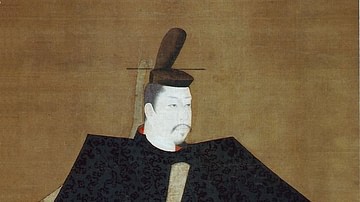
Worksheet/Activity
Government & Society in Feudal Japan
This activity has been designed to fit a 30-minute slot for your class and is suitable for both online and classroom teaching, as well as homeschooling. Students have to read one article (also available in an audio format) in order to complete...
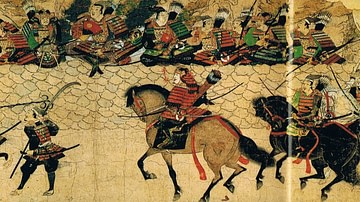
Lesson Pack
Feudal Japan
In this pack, you will find four lesson plans about feudal Japan, including activities, assignments, homework, and keys (all suitable for online teaching), as well as: Multiple choice quiz questions in an excel format Glossary of keywords...
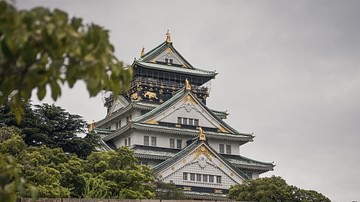
Image Gallery
30 of Japan's Finest Castles
This image gallery includes 30 of the finest castles in Japan, based on their level of preservation as well as their architectural and cultural heritage. It is by no means an exhaustive list, as Japan has produced countless castles worthy...
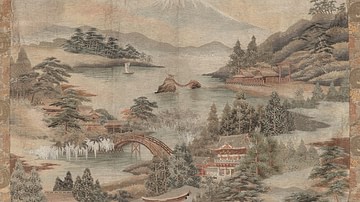
Definition
Meiji Period
The Meiji period refers to the period in Japanese history from 1868 to 1912 during which the Meiji Emperor reigned. Following the overthrow of the Tokugawa shogunate in the Meiji Restoration of 1868, Japan's new leaders embarked on a program...
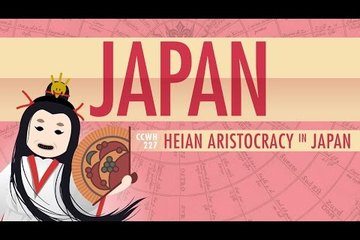
Video
Japan: Cultural History and the Heian Period
John Green describes the Heian period in Japan, lasting from 794CE to 1185CE. The Tale of Genji by Murasaki Shikibu was the classic piece of literature of the day, detailing the elite, aristocratic culture of the Heian period.
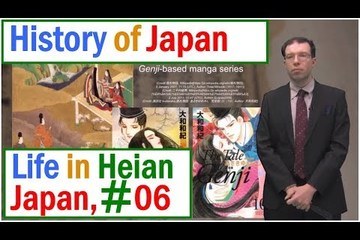
Video
The History of Premodern Japan: Life in Heian Japan
This lecture discusses the livelihood of those living in Japan during the Heian period.
By: Kanda University of International Studies.
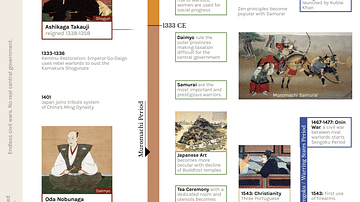
Image
Timeline of Medieval Japan
Illustrated timeline of Medieval Japan, showing the evolution of feudal society, religion, government and military through several periods: Kamakura Period (1185 - 1333) Muromachi Period (1333 - 1573) Sengoku Period (1467 - 1567...
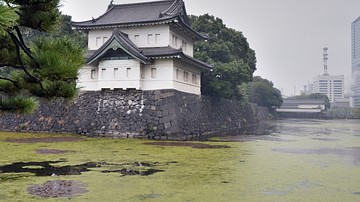
Definition
Edo Period
The Edo period refers to the years from 1603 until 1868 when the Tokugawa family ruled Japan. The era is named after the city of Edo, modern-day Tokyo, where the Tokugawa shogunate had its government. It is also sometimes referred to as the...
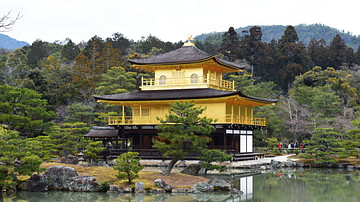
Image
Kinkakuji Temple in Kyoto, Japan
Kinkakuji Temple or the "Temple of the Golden Pavilion" was constructed in the 1390s CE as the retirement villa for Shogun Ashikaga Yoshimitsu (r. 1368–1394 CE). It is comprised of a three-story pavilion — covered in luxurious gold leaf...

Image
Mongol Invasion of Japan, 1281 CE
A detail showing the failed Mongol attack on the defensive walls of Hakata, Japan in 1281 CE. From the Mongol Scroll, aka the 'Illustrated Account of the Mongol Invasion of Japan.' Commissioned by Takezaki Suenaga, 1293 CE.